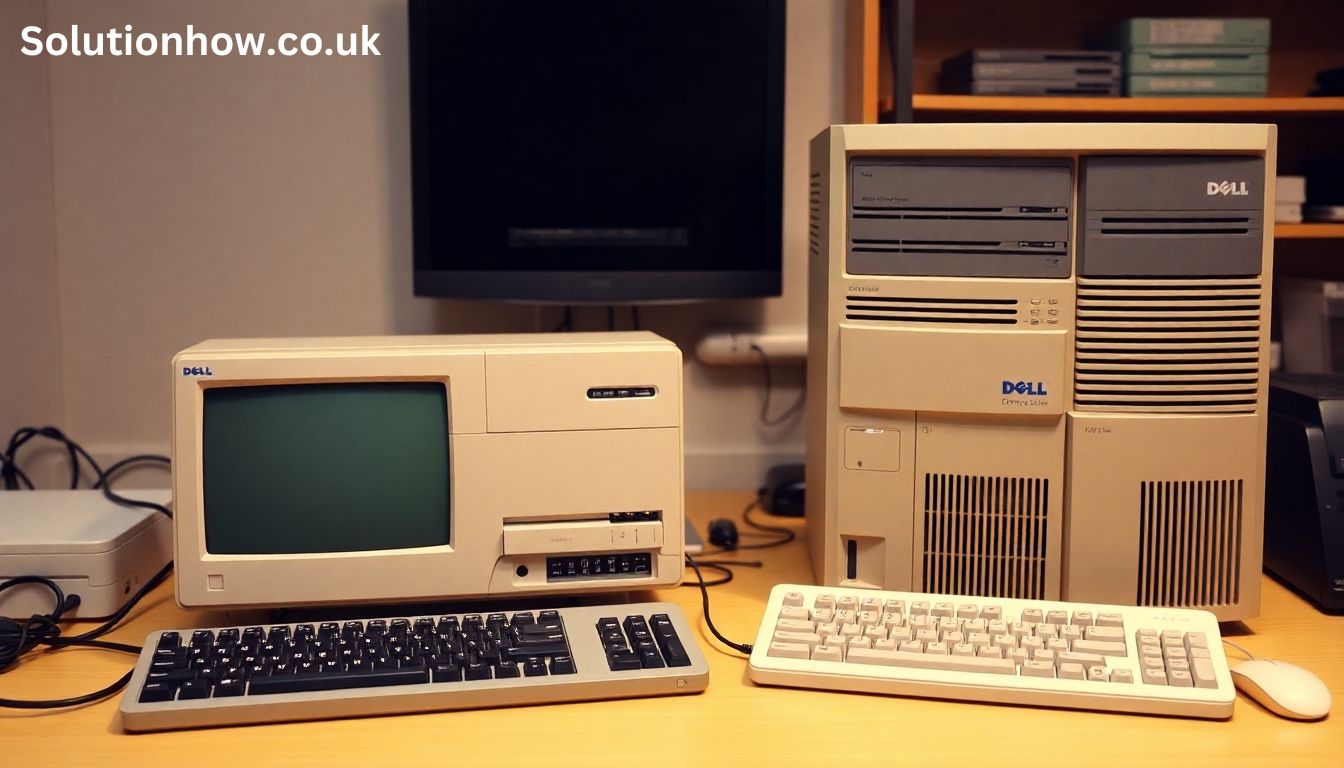The Dell Dimension L800r and Dell Dimension 800eb are vintage desktop systems that once played a pivotal role in everyday computing. Released by Dell in the late 1990s and early 2000s, these machines were designed to cater to home users, small businesses, and educational institutions. Although these computers have since become outdated, they were integral in shaping the computing landscape of their time. This article delves into the key specifications, features, and the legacy of the Dell Dimension l800r 800eb MH and Dell Dimension 800eb.
The Evolution of Dell’s Dimension Series
The Dell Dimension L800r and 800eb series was a significant part of Dell’s lineup of personal computers. First introduced in the mid-1990s, it quickly became a favorite among home and business users due to its affordability and reliable performance. The Dimension series was available in various configurations, making it adaptable for different needs. Whether users needed a basic home office machine or a more powerful desktop for light gaming or multimedia tasks, Dell offered machines tailored to meet these demands. The Dimension L800r and Dimension 800eb represented the transition from older systems to newer, more powerful machines equipped with Pentium III processors and more advanced multimedia capabilities.
Overview of Dell Dimension l800r 800eb MH
The Dell Dimension L800r was a compact desktop aimed primarily at home and small office users. While it may not have offered the highest-end features of the time, it provided reliable computing for everyday tasks.
Key Features and Specifications
Processor:
The Dimension L800r was powered by an Intel Pentium III processor running at 800 MHz. The Pentium III series introduced improved performance and higher clock speeds compared to the earlier Pentium II, making the L800r capable of handling basic computing tasks, office applications, and light multimedia.
Memory:
This system supported up to 512 MB of RAM, which, at the time, was more than sufficient for everyday computing. Users could comfortably run programs like Microsoft Office, browse the web, and play simple multimedia content. However, by today’s standards, this amount of RAM would be considered minimal.
Storage:
The L800r came with a 10 GB to 40 GB hard drive, which was typical for systems of its era. This range provided enough space for operating systems, applications, and personal files, though it would be inadequate by modern storage standards. Many users of the L800r may have relied on external storage solutions or CD/DVD drives to handle larger data files.
Graphics:
While this was adequate for tasks such as document editing, internet browsing, and watching DVDs, it was not suitable for gaming or demanding graphic applications. Dedicated graphics cards could be added in some configurations, but most L800r models came with integrated graphics.
Connectivity and Expansion:
The Dimension L800r provided several USB ports for connecting peripherals like keyboards, mice, printers, and external storage devices. It also featured an Ethernet port for network connectivity and a 56K modem for dial-up internet access. The compact design limited internal expansion options, though users could add additional peripherals through external ports.
Design and Form Factor:
One of the standout features of the L800r was its compact form factor. Unlike larger tower desktops, the L800r was designed to occupy less space on the user’s desk. This made it an ideal choice for home offices, dorm rooms, or other environments where desk space was limited.
Operating System:
The L800r typically shipped with Windows 98 or Windows 2000. As newer versions of Windows XP became available, many users of the L800r upgraded to this operating system, though the older hardware could struggle with newer software.
Exploring Dell Dimension l800r 800eb MH
The Dell Dimension 800eb was a slightly larger and more customizable version of the L800r. While the two systems shared similar internal components, the 800eb was sold in a larger tower case, which allowed for additional expansion and upgrade options.
Key Features and Specifications
Processor:
Similar to the L800r, Dimension 800eb came equipped with Intel Pentium III processor speed of 800 MHZ. However, the 800eb came with additional configuration options, potentially offering different processors or more advanced cooling solutions due to its larger form factor.
Memory:
The Dimension 800eb supported up to 512 MB of RAM, just like the L800r. However, its larger case allowed for better airflow, which could help maintain stability during extended usage or when adding more RAM.
Storage:
The 800eb came with 10 GB to 40 GB hard drive options, similar to the L800r. The larger form factor, however, provided more flexibility for adding additional storage drives or upgrading the existing hard drive, which could be an advantage for users needing more space.
Graphics:
The 800eb also featured the Intel 810 integrated graphics chipset. However, its tower design allowed users to install a dedicated graphics card, making it a better option for those who wanted to improve their system’s graphical performance for tasks like gaming, multimedia, or graphic design.
Connectivity and Expansion:
The larger form factor of the Dell Dimension l800r 800eb MH made it more customizable. It came with multiple USB ports, an Ethernet port for networking, and a 56K modem. More importantly, the 800eb offered additional expansion slots for upgrading components like RAM, storage drives, and graphics cards.
Design and Form Factor:
Unlike the L800r’s compact design, the 800eb came in a tower configuration, offering more internal space for expansion. The tower form factor was better suited for users who required more flexibility and upgrades in the future.
Operating System:
The Dimension 800eb typically shipped with Windows 98 or Windows 2000. Many users of the 800eb later upgraded to Windows XP, although performance could vary depending on the system’s configuration.
Legacy and Impact of the Dell Dimension l800r 800eb MH

While the Dell Dimension l800r 800eb MH and 800eb may seem outdated today, they were significant in their time for a number of reasons. These systems served as an introduction to many of the technologies we now take for granted in modern PCs, such as multimedia capabilities, integrated graphics, and USB connectivity.
Impact on Desktop Computing
Both the L800r and 800eb helped solidify Dell’s reputation for offering reliable, cost-effective systems for home and business users. The Intel Pentium III processor was an important milestone in personal computing, offering better performance and efficiency compared to earlier processors. By introducing these systems, Dell played a key role in helping users transition from the more basic, older PCs of the 1990s to the more powerful systems that would dominate the market in the years to come.
Design Philosophy and Consumer Needs
The L800r and 800eb both exemplified Dell’s commitment to meeting consumer needs at the time. The compact design of the L800r appealed to users who had limited space, while the expandable tower design of the 800eb catered to users who wanted more flexibility for upgrades and customization. These design philosophies were reflective of the changing consumer needs as users began to expect more versatility in their desktop computers.
Continued Relevance Among Enthusiasts
Today, the Dell Dimension l800r 800eb MH and 800eb have become collectibles for vintage computer enthusiasts. Many collectors enjoy restoring and preserving these systems as a nostalgic piece of computing history. In addition, the systems’ simple configurations and the availability of parts make them accessible to those interested in learning about or tinkering with old desktop computers.
Also Read: Flashfile 2413-2 Moto G Pure
Conclusion
The Dell Dimension L800r and Dell Dimension l800r 800eb MH may no longer be relevant for modern computing needs, but they were once solid performers in their time. Offering reliable performance, expandability, and multimedia capabilities, these systems served as important stepping stones in the evolution of personal desktop computers. Whether as a nostalgic relic or a vintage computing project, the Dimension L800r and 800eb remain key pieces of computing history that played a role in shaping the personal computer industry of the late 1990s and early 2000s.



